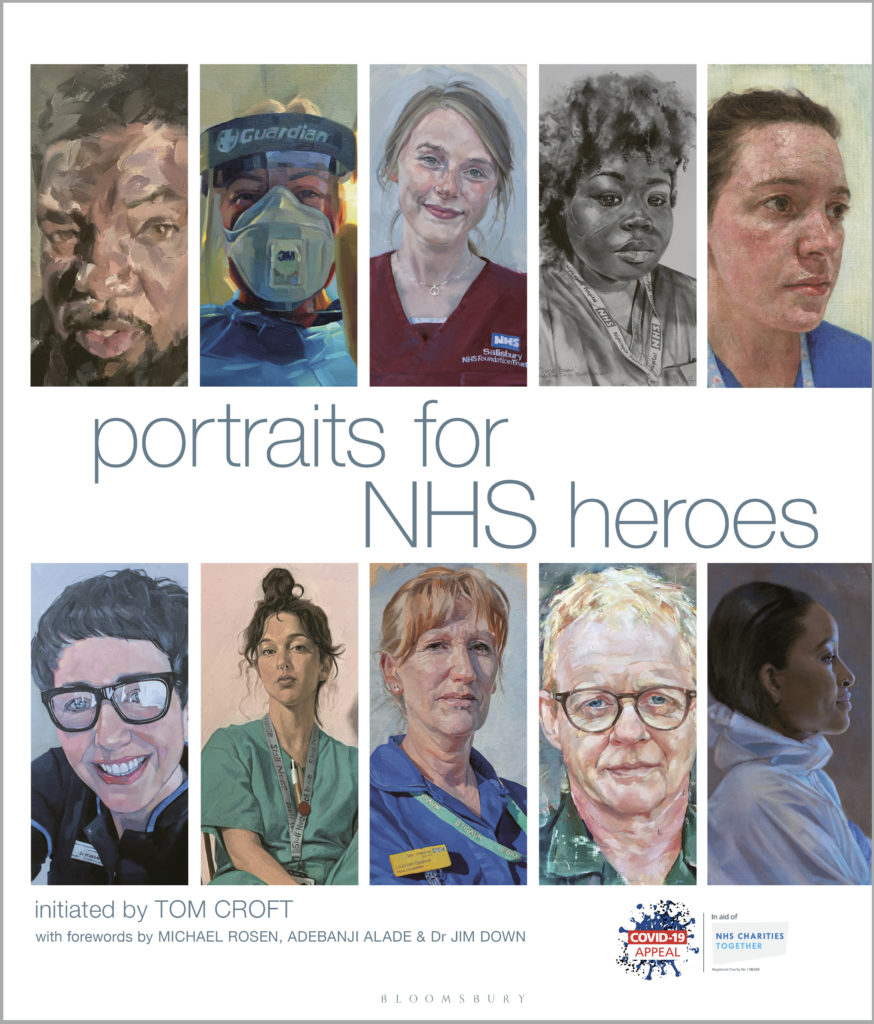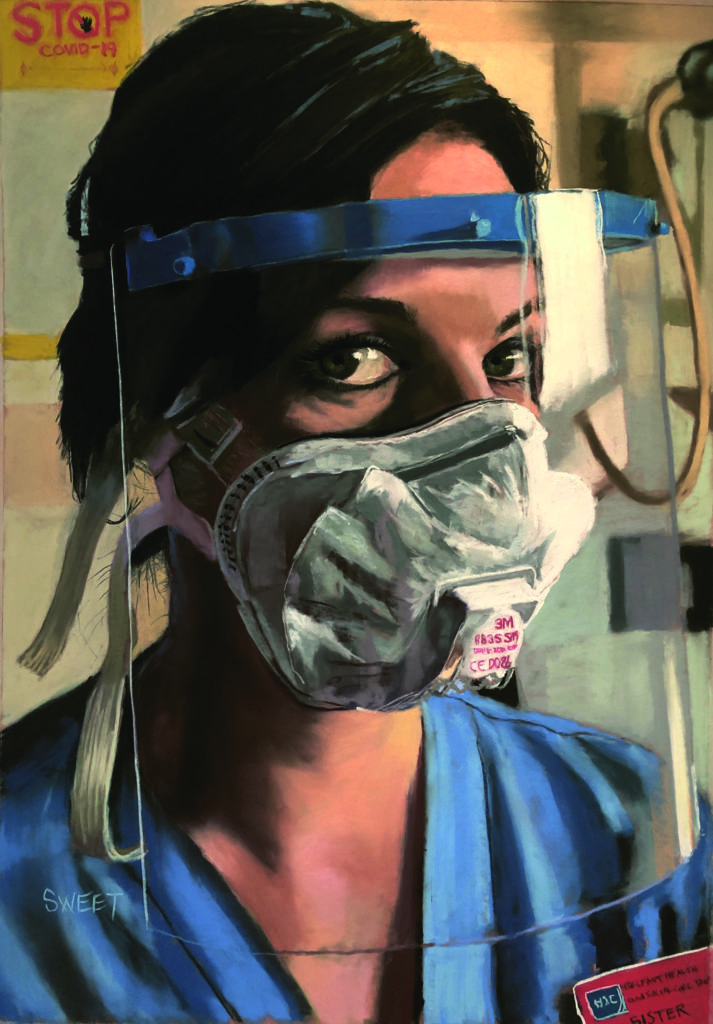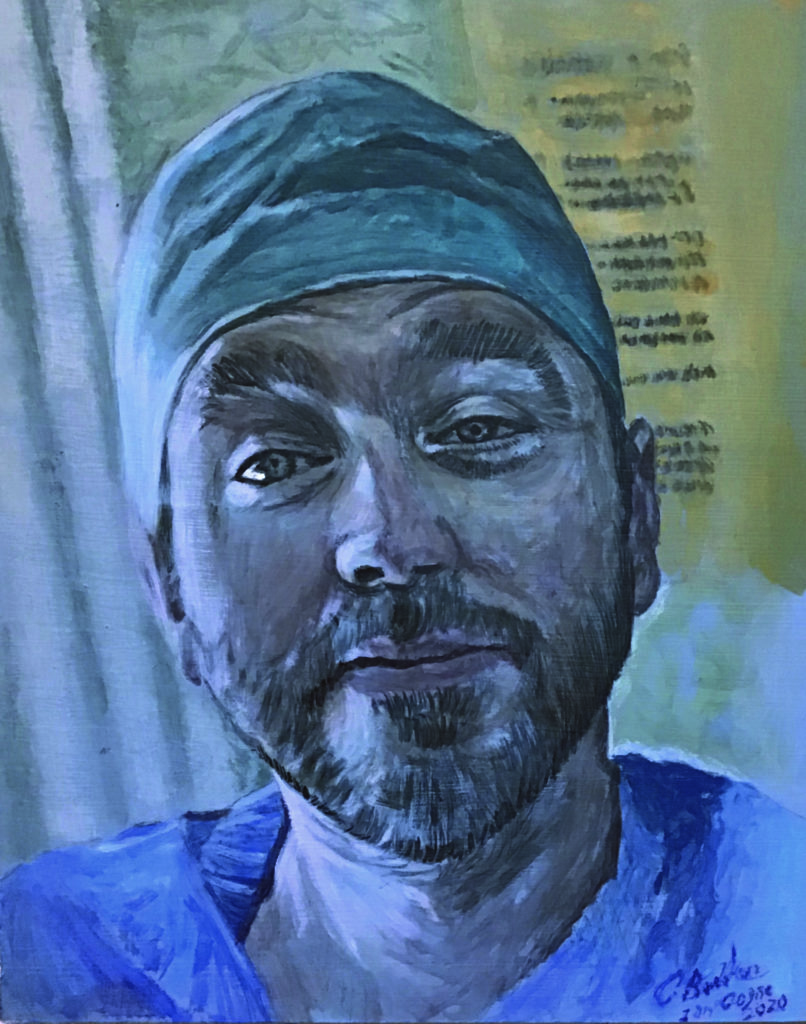WHEN Britain went into lockdown in March, it gave artist Tom Croft an idea.
As a self-employed portrait painter, Oxford-based Croft’s work quickly came to a halt, like so many others across the country.
Those who did not stop work of course were the men and women employed in healthcare, more specifically, by the NHS.
Using his newfound spare time to contemplate how the world of art would mark the pandemic, Croft soon found himself concerned with documenting the frontline workers who were putting their lives on the line every day that they turned up to work in hospitals across the country.
He decided it was their portraits that should be painted.
Starting small, he put a video on Instagram offering a free portrait to the first NHS key worker who contacted him.
He was immediately contacted by Harriet Durkin, a nurse at the Manchester Royal Infirmary, who had contracted Covid-19 and now recovered was about to return to the frontline.
Croft’s portrait of Harriet, wearing PPE, was the first in what became a global art project.
Within two weeks more than 500 artists had joined him in his campaign to document these Covid heroes and had been matched up with NHS workers who would become their virtual sitters.
Now a selection of those portraits have been published in the book Portraits for NHS Heroes, which is “both a celebration and a remembrance, in physical form, of the dedication of our NHS key workers”.
Introducing the book, Croft explains: “On March 23, my youngest daughter’s birthday, the government locked down the country to stop the spread of the Covid-19 virus.
“As a self-employed portrait painter used to working from home, I assumed this might not be too much of a change to my normal working practice.
“However, when you’re painting you have a lot of time and headspace to think about things. I listened too much to rolling news, and as the enormity of the crisis hit me, I couldn’t concentrate or focus on my work at all.”
He adds: “I get commissioned to paint portraits for many different reasons. It could be to mark a birthday, anniversary or retirement, to record and document a moment in time or to celebrate significant achievements.
“Walk through any major public gallery and the portraits tend to depict the great and sometimes the good of the previous generations. People who stood out and made a difference to the world.
“It occurred to me that the subjects lining the walls of major galleries for future generations to look back on should be the people who made the biggest difference during this extraordinarily challenging period of history – the NHS key workers on the front line, risking their physical and mental health on a daily basis for our benefit.
“I had rediscovered (or reminded myself of) the point and power of portraiture.”
With hundreds of NHS staff willing to be painted and just as many artists, based around the world, happy to paint them – all of which was done for free – Croft managed to organise the project through the use of the #portraitsfornhsheroes hashtag – where artists who ahd completed work in the name of the initiative would post images of their completd portrait/s for the world to see.
There were also artists in other countries who contacted Croft for permission to use the idea, and tweak the hashtag, to reflect their own healthcare systems.
Ireland, Belgium, Spain, France, Itlay, the Netherlands, Germany, Poland, Croatia, Malaysia, Canada and the USA are among the countries now taking part.
There are more than 13,000 posts under the hashtag #portraitsfornhsheroes, with one artist alone responsible for completing 50 NHS portraits.
For Croft the ultimate goal will be to one day hold a physical exhibition to share the work.
“People continue to paint, draw, sculpt, stitch and digitally produce portraits, and I am optimistic there will be a significant physical exhibition to say thank you – a nationa acknowledgement so that we can all see what life looked like through the eyes of the nHS heroes and through the hands of the art community,” he explains.
In the meantime his book, which includes forewords by children’s author Michael Rosen and vice president of the Royal Institute of Pol Painters, Adebanji Alade, will bring a sense of that prospective exhibition to the world.
Some of the contributions by Irish artists:

Gemma Carter by Irish artist David Sweet
David explains: “Gemma is a sister in the regional neonatal intensive care unit in Belfast. At the outset of the pandemic there were severe shortages of PPE. This visor was manufactured using 3d printing technology by Jim, husband of one of the consultant neonatologists. In the beginning staff underwent intensive training in PPE use and protocols for moving and caring for mother– infant pairs potentially at risk. Thankfully during the first wave of infections there were no cases of neonatal Covid-19 in Northern Ireland.”

Ian Coyne by Christopher Banahan, who is based in Kinvara, Co. Galway
Christopher explains: “I felt inspired by the charming grin Ian, an ICU physician associate, gives off in this image. Despite his obvious fatigue from the exhausting work as a frontline health worker during the Covid pandemic, he still manages to radiate an infectious smile that transcends the oppressive situation he finds himself in, and gives us hope and faith in these extraordinary NHS heroes.”

Lorraine by Irish artist Steve Cannon
Steve explains: “It was a profound pleasure and honour to create a portrait for Lorraine. After losing a leg due to a maritime accident in 2001, I saw first-hand just what these amazing people do for us, and what they have done for me personally. Now for them to face a pandemic and to risk their lives for us day in and day out, a portrait does not even start to pay back their sacrifice but hopefully lets them know how much they are appreciated.”
Portraits for NHS Heroes by Tom Croft, costing £25, can be bought here.
All royalties from the sale of each book will be paid to NHS Charities Together to fund vital projects. For further information click here.

